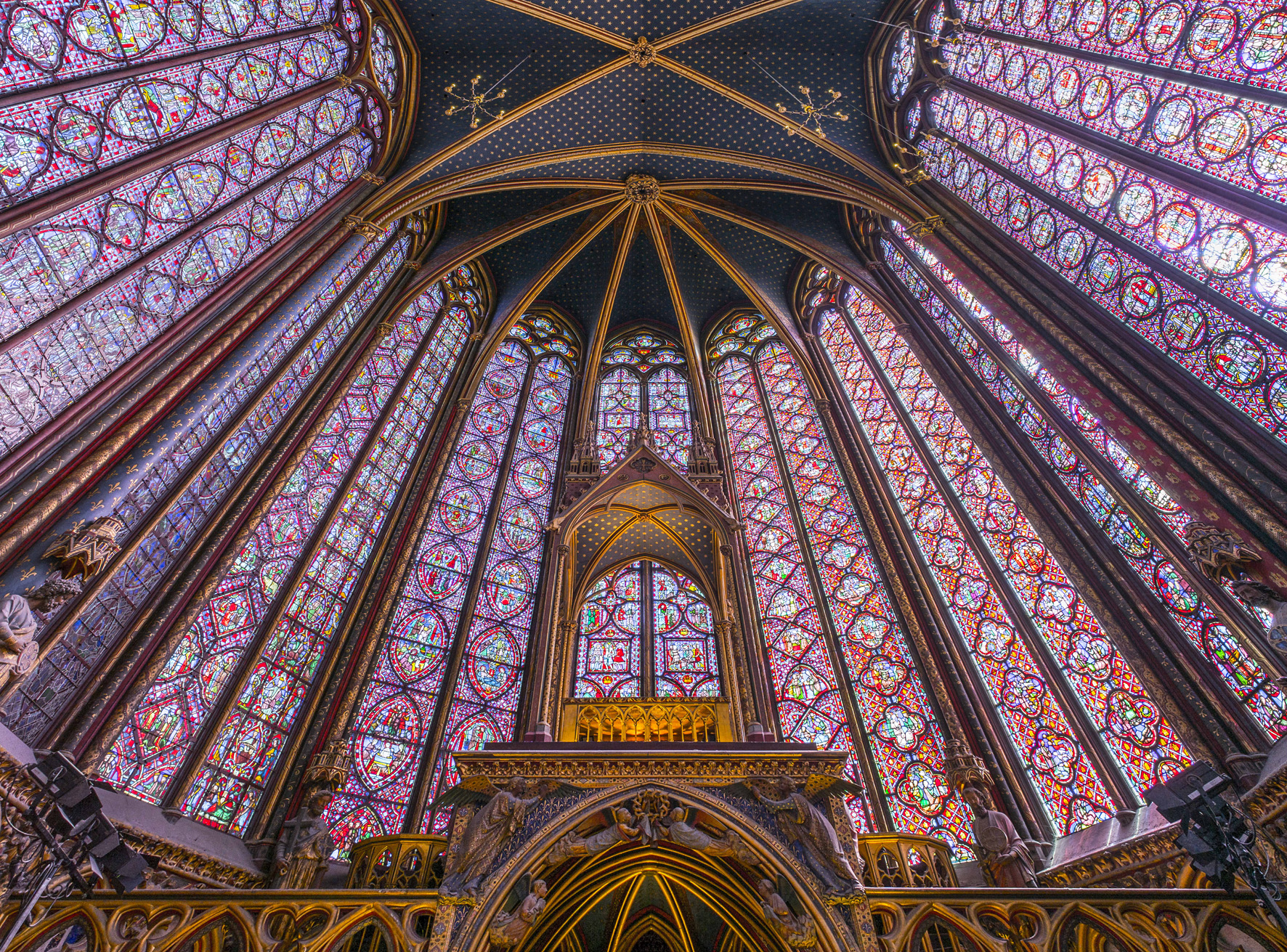Window from the Gothic period, ca. 1150-1535. Gothic windows are church windows with pointed arches and stained glass.
Gothic windows were significantly larger than Romanesque windows and often divided into two or three sections – biforium or triforium windows, respectively. The middle section of the triforium was the highest.
In the 1300s, a technique for manufacturing crown glass developed in France made it possible to produce discs of window glass whose diameters reached up to 1.5 metres. However, small panes of glass and lead cames were still used for the production of windows, since large sections of glass could not yet be cut to size with precision.
Around 1350, a lead roller was developed to press cames into the right shape and size. With this invention, cames glasswork could be manufactured quickly and inexpensively, and by the 1400 and 1500s, leadlights had become common in regular houses.

